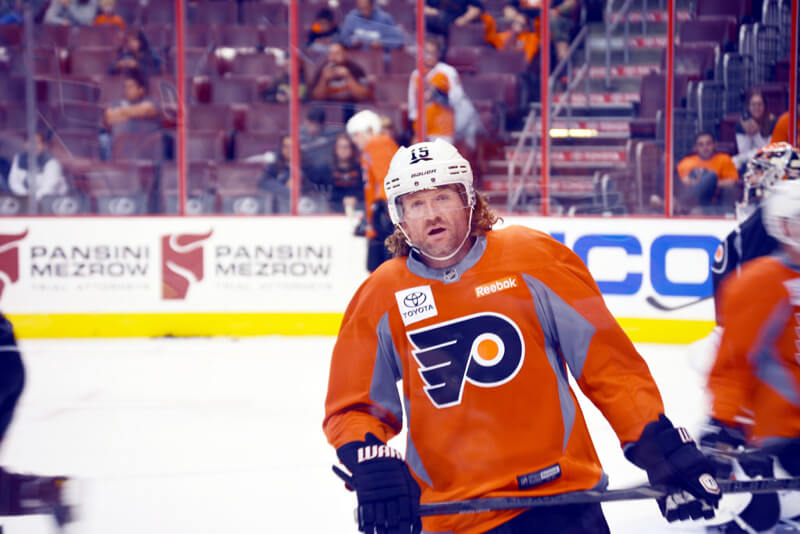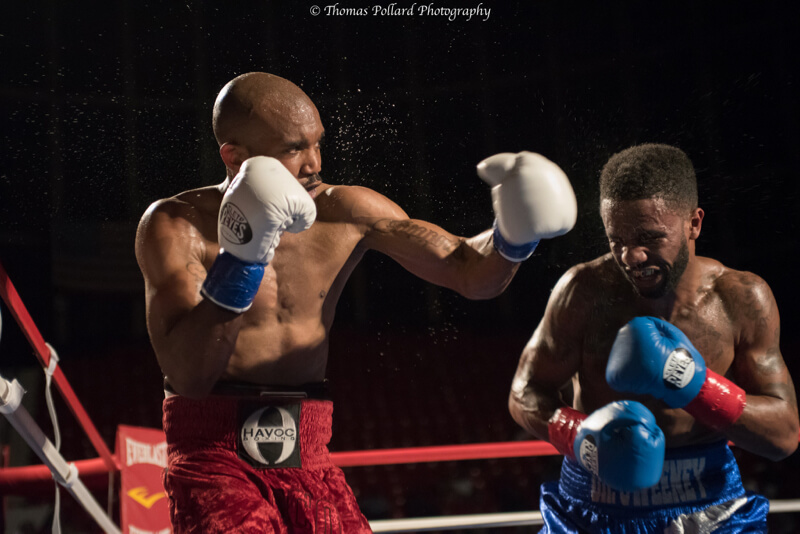Indoor sports are notoriously hard to photograph. This challenge comes from a combination of three factors. First, the action in a sport is typically fast and difficult to capture. Second, the lighting conditions of indoor sporting events are generally poor. There’s not always enough light, and the type of light creates bad coloring in photos. And finally, it can be hard for a photographer to get a good position to capture the action.
These factors may make it challenging to photograph indoor sports well, but not impossible. Here are five quick tips to help you shoot better photos at indoor sporting events.
Gary Griggs — University of Arkansas Razorbacks vs University of Florida Basketball
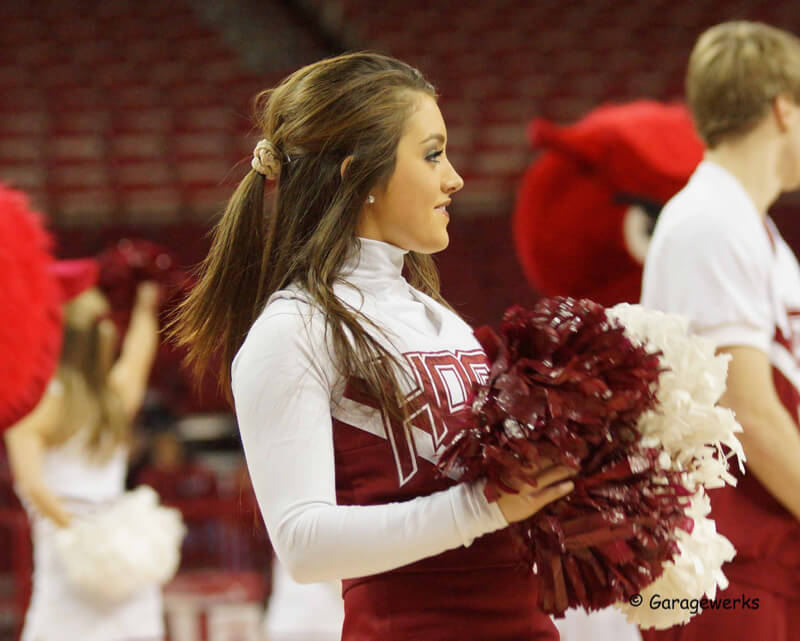
1. Arrive early.
For several reasons, it’s a good idea to arrive early to a sporting event. First off, you can snatch up a better position in the stands. If you talk to whomever’s in charge, you may even get permission to shoot closer to the sidelines.
Often the players will practice before the game, too. This is an excellent opportunity for you to practice as well. Take a few test shots. Figure out what camera settings work well with the lighting. If you’re lucky, you can already get a few good photos of the athletes.
2. Find a good position.
For a large part, your location in relation to the game will determine the quality of your photos. It’s good to think about the ideal positions ahead of time. As a rule, the closer you can get to the action and the players, the better your photos will be.
Ideally, you’ll be able to move around freely, so you can get more varied and better angles. However, if you’re stuck to the stands, get as low as possible. Make sure you also get a good view of the areas that are crucial to the sport, such as the end zone, scoring area, and basket.
Finally, you will get better photos if the action is directed towards the camera. Thankfully, teams switch sides in most sports, so you should be able to get good photo opportunities at least half of the time.
3. Get to know the three main camera settings: shutter speed, aperture, and ISO.
The most important camera settings for indoor sport photography are shutter speed, aperture, and ISO. Knowing how these settings affect the end result will help you take better photos of indoor sports.
Shutter speed
The shutter speed determines how much of the action in a sport is frozen. A fast shutter speed freezes the action; a slow shutter speed blurs the action. When an indoor sport is fast, you want to use a faster shutter speed, say 250 and up. For other sports, a shutter speed of 60 (or lower) will suffice. There’s of course room for personal style and preferences. For example, some photographers like to shoot at a slower shutter speed because it captures more of the movement.
Shutter speed, aperture, and ISO together affect the light exposure of a photo. The shutter speed needs to be higher than normal for indoor photography, which isn’t ideal when combined with poor lighting. These conditions mean that you’ll have to compensate with aperture and ISO to get better light exposure.
Aperture
The aperture controls the amount of light hitting the lens. To pull in more light with a wide aperture, you’ll want the f-stop number to be as low as possible, such as f/1.8, f/2 or f/4. A wider aperture results in a shallower depth-of-field, meaning that more of the background and foreground in your photo will be out of focus. Keep in mind that a shallow depth-of-field will make it harder to focus on the action.
ISO
ISO controls the light sensitivity of your camera’s sensor. With a higher ISO, the camera’s sensor can pick up light more easily, so you can have a faster shutter speed and narrower aperture. The downside of a higher ISO is that the sensor picks up more noise. This noise makes the final photo look granular. How high you can take the ISO level depends on your camera. A better (and more expensive) camera will be able to shoot quality images even at higher ISO levels. As a rule of thumb, stick with a maximum ISO of 1600, unless you know your camera can handle higher levels.
Knowing about shutter speed, aperture, ISO and their trade-offs is half the work. Applying them comfortably to indoor sport photography will take some practice, but is well worth the effort.
Gary Griggs — University of Arkansas Basketball vs South Dakota State
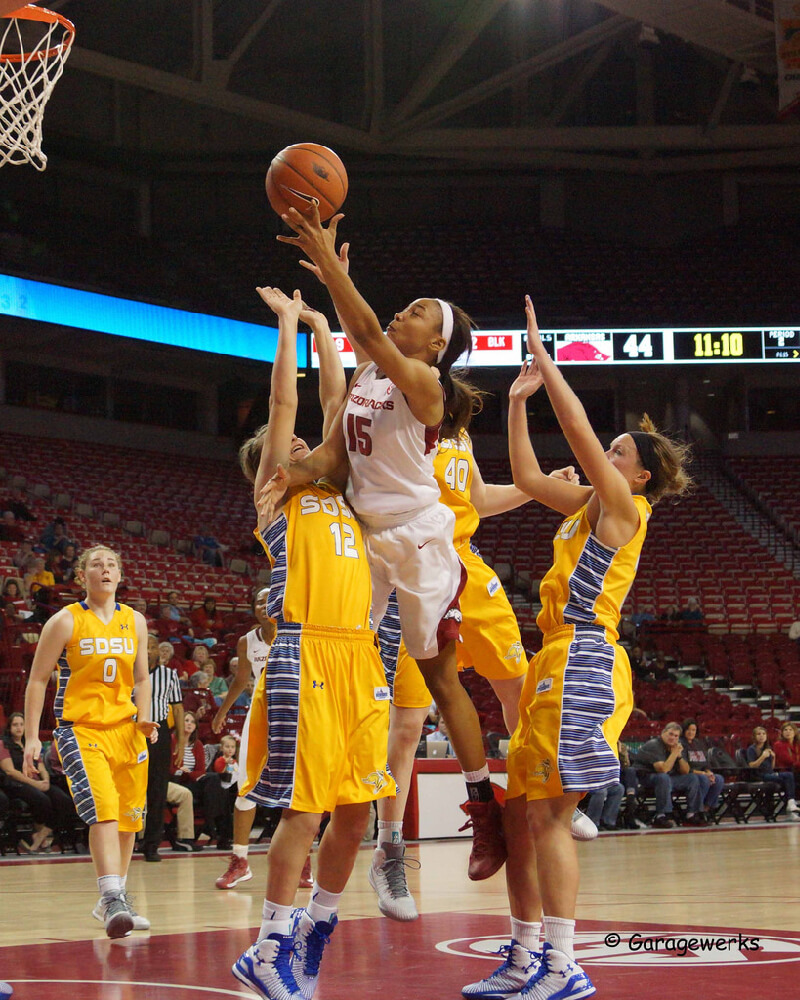
4. Focus.
First of all, you should stay mentally focused on the game. Indoor sports require your full concentration because a lot can happen in a short period of time. If nothing else, staying focused can prevent a ball from hitting your camera.
In a technical sense, it’s also important to shoot photos that are in focus. This is tricky, however, when the subjects are constantly moving. To prepare for this difficulty, you should spend time getting to know your camera’s focus beforehand.
Your camera will most likely have three types of focus: manual, single autofocus (AF-S or One-Shot on your camera), and continuous autofocus (AF-C or AI-Servo). Single autofocus focuses once and locks that specific focus. Continuous autofocus, on the other hand, will refocus until you take your photo. For indoor sport events, it’s recommended to use continuous autofocus because of the constant movement in a game. If continuous autofocus on your camera is too unpredictable, you could try single autofocus instead.
If both types of autofocus are not working for you, you can experiment with manual focus. To do this effectively, you would first focus on a specific spot and then wait for the action of the game to reach it. Good places to focus on are the basket, end zones, and other places that will provide exciting shots.
You can read more about the different types of focus in our post called “Learning How to Focus”. It can also be useful to try out back button focus, a method that assigns the autofocus to a different button than the shutter button.
5. Study the sport.
The more you know about an indoor sport, the better you’ll be able to capture it. Your knowledge should go beyond the rules of the game. For example, if you have a feel for the game’s flow, you’ll know where to position yourself ahead of time. If you know about the style and ability of the players, you’ll be able to anticipate their actions. Of course this “quick tip” takes time and experience, but it’ll help you in the long run. If anything, it will help you enjoy the sport even more.
Gary Griggs — University of Arkansas Razorbacks vs University of Kentucky Gymnastics
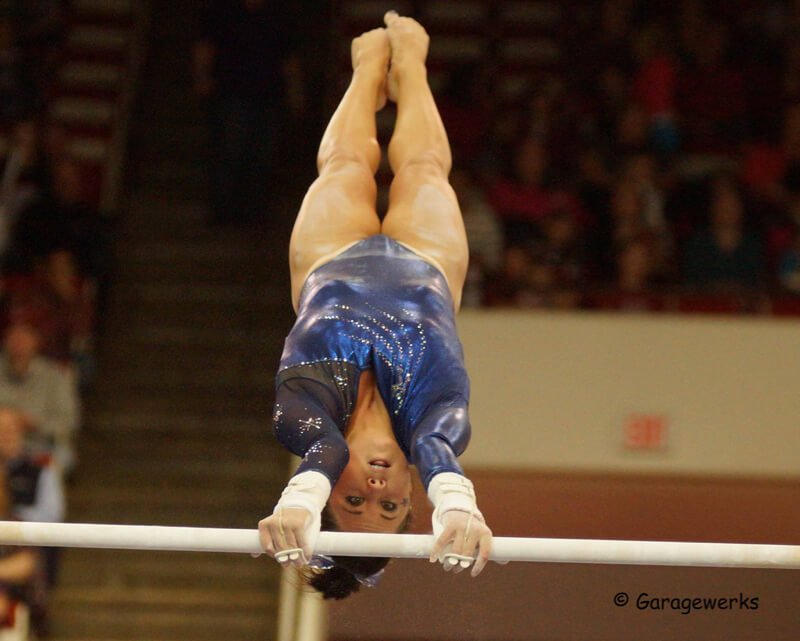
The photos in this post were selected from the submissions to our Flickr group. Next time you get an awesome sports photo, share your image with the group so we can admire your work!
